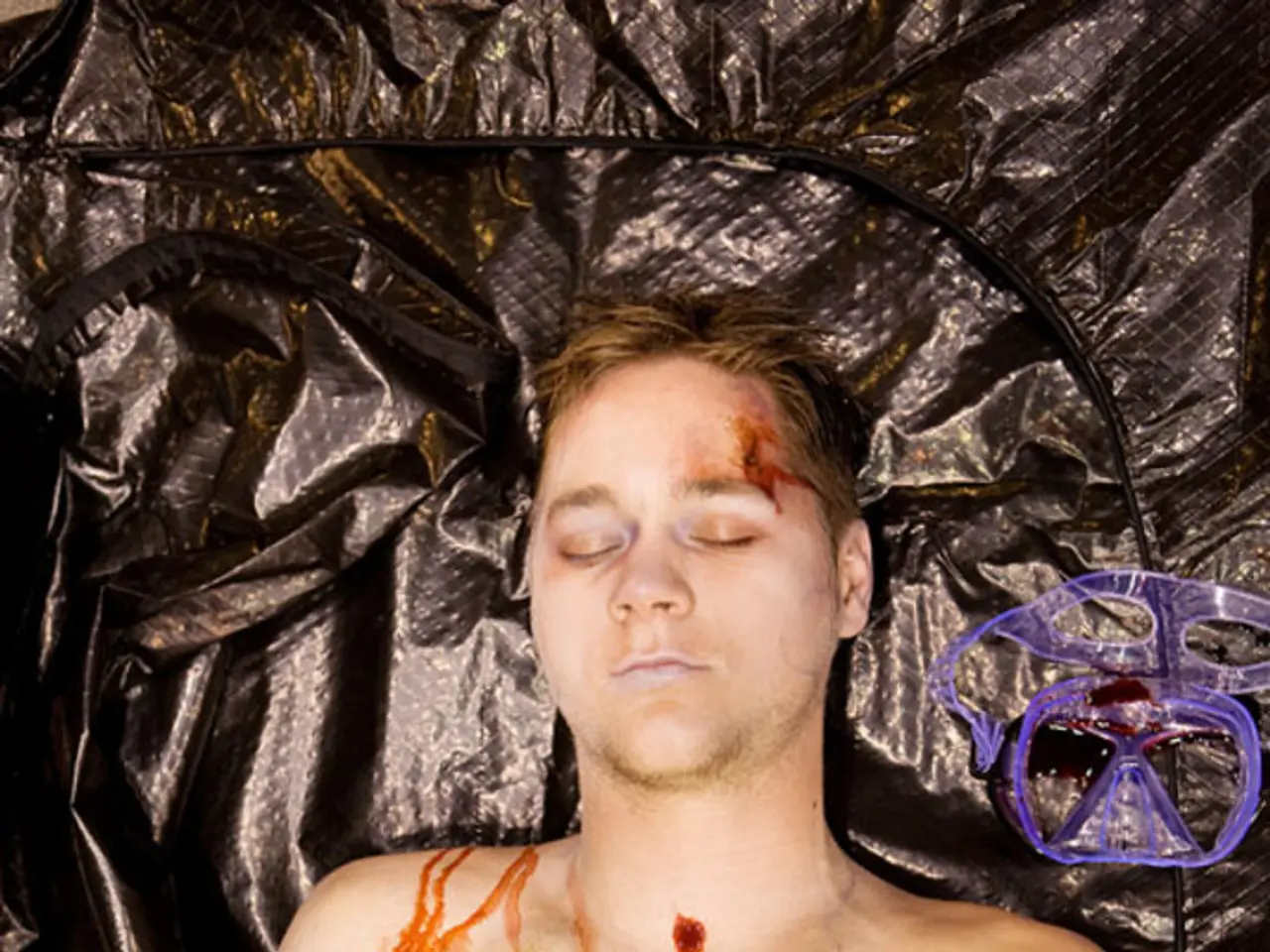"Overview and Prognosis for Coffin-Lowry Syndrome: What to Expect in Terms of Life Span"
Coffin-Lowry Syndrome (CLS) is a rare genetic condition that affects approximately 1 in 40,000-50,000 people worldwide. This disorder, characterised by intellectual disability, distinctive physical features, and a variety of associated health problems, follows an X-linked dominant inheritance pattern.
Individuals with CLS may exhibit a range of symptoms, including tapered fingers, downward-slanting eyes, delayed bone development, a prominent forehead, a prominent brow ridge, widely spaced eyes, a broad nose, protruding nostrils, an underdeveloped upper jaw bone, and large, low set ears. Other possible symptoms may include short stature, feeding problems, respiratory problems, hearing impairment, awkward gait, heart and kidney problems, and the occurrence of stimulus-induced drop attacks (SIDAs).
Males with CLS often have more pronounced facial symptoms and learning disabilities than females. The disorder is caused by producing little to none of the ribosomal S6 kinase 2 protein, a protein that is essential for normal growth and development. The RPS6KA3 gene, responsible for providing instructions for making this protein, is typically altered in individuals with CLS.
However, it's important to note that some people with features of CLS do not possess alterations in the RPS6KA3 gene, suggesting that other genetic or environmental factors may also play a role.
Treatment for CLS is focused on managing symptoms and improving quality of life, as there is no cure for the genetic disorder. This typically includes multidisciplinary supportive therapies such as physical therapy to support motor skills and manage muscle tone issues, occupational therapy to aid daily living skills, speech therapy to assist communication challenges, and medical management for associated symptoms. Regular monitoring by specialists including neurology, cardiology, and orthopedics is essential to address complications as they arise.
Treatment options may also include medication for SIDAs. In cases where treatments for SIDAs are ineffective, a person may have to wear a protective helmet or use a wheelchair. Early intervention can significantly improve the outlook for people with CLS.
It's worth noting that around 50% of people with CLS have no family history of the disorder. Between 20% and 30% of people with CLS have more than one affected family member. Children born from a biological mother known to have a copy of a gene variation for CLS are at a 50% risk of inheriting the disorder.
In some cases, CLS can reduce a person's lifespan. Evidence shows that around 13.5% of males and 4.5% of females with CLS died at an average age of 20.5 years. However, the prognosis for CLS is different for each individual, with the severity of symptoms affecting outlook.
[1] Medical Guidelines for Coffin-Lowry Syndrome. (n.d.). Retrieved from https://ghr.nlm.nih.gov/condition/coffin-lowry-syndrome#treatment
[2] Coffin-Lowry Syndrome. (n.d.). Retrieved from https://www.ncbi.nlm.nih.gov/books/NBK1392/
- Science is increasingly focusing on predictive models for health-and-wellness, including mental health, to anticipate potential medical-conditions in individuals with Coffin-Lowry Syndrome (CLS).
- With the advancement in predictive technologies, it might become possible to identify other genetic or environmental factors contributing to CLS, beyond alterations in the RPS6KA3 gene, thus improving AQ (accuracy quotient) in diagnosing and managing this condition.
- Given the presence of various associated health problems and symptoms in CLS, obesity could potentially be another area of interest for researchers looking to explore preventative measures and treatment options in health-and-wellness management for this genetic disorder.




